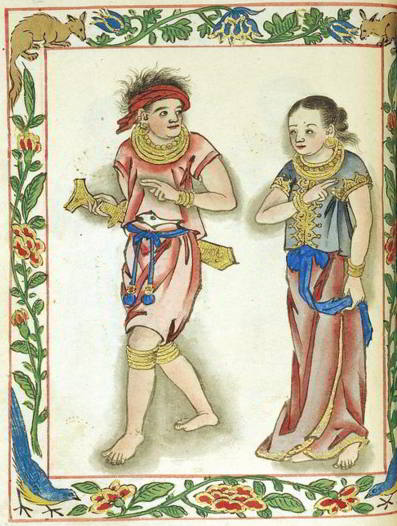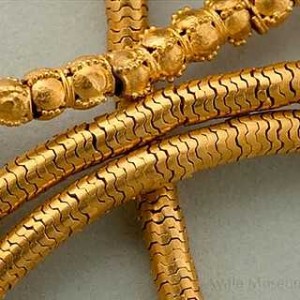In 1565, while Miguel Lopez de Legazpi was waging war against the king of Cebu, his men accidentally stumbled on a rich source of booty courtesy of the goldwork that the Cebuanos of the time buried with their dead. Dumbfounded with such treasures, the Spanish conquerors each took whatever they could lay their hands on. Unable to personally take part of the looting, Legazpi ordered that no burial site will be opened unless officers are present to take the Spanish king’s “fair share” of the booty.
After peace has been established in Cebu due to Cebuano capitulation, the colonizers once again were astonished when, in a procession, those who surrendered were arrayed in gold: “some with clasps on their legs and wearing earrings and armlets and gold rings on their hands and fingers.”
Gold, indeed, may have been precious to the colonizers but it was just commonplace for the natives “even the poorest Bisayan natives,” says Alcina “possess them, each according to their strength and ability.”
A golden chain called kamagi
Not only was there an abundance of gold before but there were also many goldsmiths who were able to create intricate designs so that based on what have survived after some of these were excavated in certain parts in Mindanao and put out as the Gold of Ancestors exhibit at the Ayala Museum in Makati, we can conclude today that these were indeed extraordinary in workmanship.
Alcina calls these goldsmiths panday san bulawan or literally “master of gold.” As to why our smiths crafted only gold, it is because in the ancient times, “they did not have silver here.”
Probably the most highly coveted work was a jewelry known as the kamagi which is described as a circular chain or a gold collar made of very small cuts and so close that it seems to be only one piece. In places other than the Visayas, this particular jewelry was worn not only as a necklace but also as a belt or even as a sash. “It is of their own origin, and comes down from ancient times. Today anyone who knows how to make one is hard to find. To make one is a very artistic and tedious process. They customarily possess them or had them (I have seen some) from ancient times.”
The kamagi was highly valued because they “are two or more brazas in length, although doubled, and so long that when standing, (a person) drags them on the ground. They used to twist one of these many times about the neck and shoulders…”
Made by primitive men
Alcina himself was so impressed at how the ancient Bisayan goldsmiths worked on the kamagi since these were made by “uncivilized” people. “Only close up can one realize them to be of minutely small pieces joined together to make up… Since it is very smooth and shiny, especially when it is of very pure gold, it has very pleasant appearance; it is a piece of jewelry of greater value and rarity than one could expect from people so seemingly crude and primitive in appearance.”
Against spasms
Not only was the kamagi a beautiful piece of jewelry to be flaunted but some of these were also made because of their supposed medicinal properties since some, especially the ones called tunga were made of “half gold and half tumbaga.” In ancient Bisayan belief, this kind of kamagi will supposedly protect the wearer from airs which cause spasms and from infections.
Of course, there were many other types of jewelry made in the past but we must emphasize that they pale in comparison to the kamagi.



